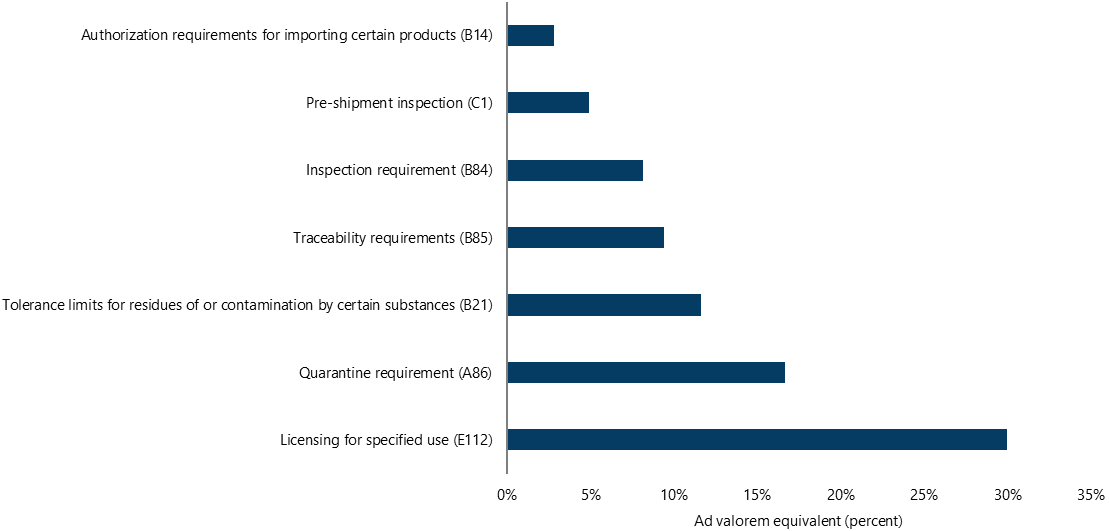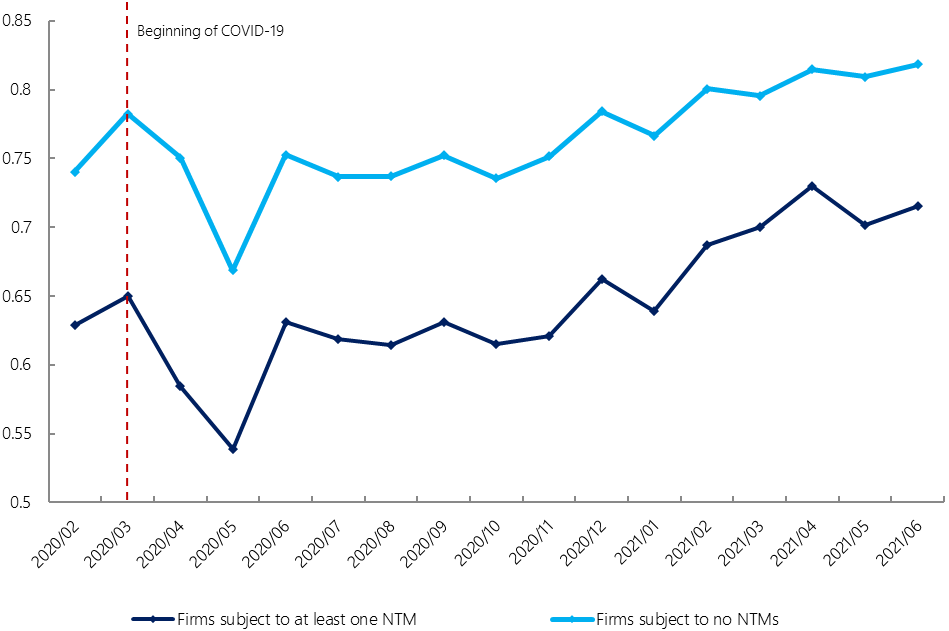 Photo: ME Image/Shutterstock.com
Photo: ME Image/Shutterstock.com
Non-tariff measures (NTMs) are measures countries establish to ensure that traded products are safe, healthy, and environmentally friendly. These measures are intended to protect consumers, but complying with them can be costly for firms, reducing their competitiveness and raising the prices they need to charge consumers. For this reason, they need to be carefully evaluated, to ensure that they do more good than harm.
To evaluate NTMs in Indonesia, the World Bank in collaboration with the Government of Indonesia and support from United Nations Conference on Trade and Development (UNCTAD), created a dataset of NTMs—the most comprehensive dataset of its kind anywhere in the world using Economic Research Institute for ASEAN and East Asia (ERIA) and UNCTAD data as a basis. The guiding manual allows other countries to create similar datasets.
The dataset can be used to study the extent and impact of NTMs in Indonesia, with an eye toward developing policy recommendations. Three types of indicators define the potential economic impact of NTMs:
- the extent to which NTMs are applied across ranges of products
- the costs they may add to trade procedures
- the value of the externality the NTM aims to address (for example, how much ensuring the safety of imported meat is worth in terms of consumer welfare).
The dataset provides direct measures of the first two sets of indicators. Estimation of the third requires additional data that are not immediately available (such as the health and economic costs of disease outbreak from imported meat and the change in probability of an episode of disease outbreak as a result of an NTM).
Indicators of the Incidence of NTMs, including on Green Goods
Users of the dataset can calculate indicators based on a broad range of product categories and view visualizations of the data online. The heatmap in figure 1, for example, shows the share of green products that were subject to NTMs in 2021. Clicking on the figure in the dataset takes the user to the visualizations on the World Bank’s World Integrated Trade Solutions (WITS) page.
Figure 1 Share of green products in Indonesia subject to selected non-tariff measures, 2021
Source: World Integrated Trade Solution (WITS).
Frequency ratios capture the number of products to which an NTM applies as a share of all products; coverage ratios provide the share of trade value affected. These indicators reveal the extent of reach of specific NTMs on the universe of traded products. Users can visualize these indicators for measures and products of interest over a particular period of time.
Users can also create their own charts to track the evolution of specific NTMs (or groups of NTMs). Doing so can help shed light on the direction of trade policy. Figure 2, for example, shows significant decreases in the share of products subject to pre-shipment inspections in 2021. It was generated by linking the product-NTM-year-month data (data on NTMs applied to products over time) to the trade data of interest. This link can also be made with regulation-NTM-time data (data on NTMs contained within each regulation over time). All of these data can be downloaded from the World Bank Development Data Hub.
Figure 2 Share of all products in Indonesia covered by selected non-tariff measures, 2008–21
Source: World Bank staff calculations based on data from the World Bank NTM Database and trade data from Badan Pusat Statistik (BPS). Note: B14 = authorization requirements for importing certain products; C1 = pre-shipment inspection; C3 = requirement to pass through specified port of customs; B84 = inspection requirement.
Trade in green and environmental goods has become increasingly important in recent years. Data on these products can help analyze how NTMs affect these goods (figure 3). These data can signal reforms that can play a crucial role in supporting international green competitiveness and reducing access to imported inputs.
Figure 3 Share of selected green goods in Indonesia covered by import approvals, 2021
Source: World Bank staff calculations from World Bank NTM Database.
Note: Goods are from the comprehensive list prepared by Green Transition Navigator.
Indicators of the Costs of NTMs
The data also allow users to estimate the ad valorem equivalents (AVEs) of NTMs, defined as the uniform tariff that would result in the same change in the import of a product as observed from the application of an NTM. AVEs reveal how costly NTMs are in tariff units (figure 4). Together with indicators of frequency/coverage, this information can provide a first filter to identify NTMs potentially in need of reform.
Figure 4 Estimates of ad valorem equivalents of non-tariff measures on intermediate goods in Indonesia using 2008–21 sample

Source: World Bank staff calculations based on data from the World Bank NTM Database.
Note: Figures are based on a sample from 2008–21. For the methodology used, see the manual.
Identifying Burdensome NTMs
The average effect of all NTMs masks significant heterogeneity across measures. Some NTMs increase the quality of the products on which they are applied; others act as barriers to trade.
Using the database, the World Bank identified four measures that are particularly burdensome for Indonesian firms: pre-shipment inspections, restrictions on port of entry, import approvals, and mandatory certification with Indonesian National Standards (SNI). These measures aim to achieve policy objectives that could be reached through less burdensome tools (figure 5).
Figure 5 Impact of selected non-tariff trade measures on the number of products and destinations in Indonesia (extensive margin)

Note: Figure is based on export data from 2014 to 2018 sourced from DG Customs and Excise and the Ministry of Finance.
Firms that face these NTMs have a shorter life span in the export market, because these NTMS make them less competitive globally and limit their diversification. In the presence of a demand shock, these NTMs lead to larger declines in exports for firms that face them compared with those that do not.
The Role of Pre-Existing NTMs during Covid-19
Products subject to these four NTMs were more negatively affected by Covid-19 lockdown measures than products that were not. Additionally, although firms in global value chains have higher survival rates and are more resilient than other firms, firms that faced these four NTMs had lower survival rates during Covid-19 than firms that did not, with port of entry restrictions having a particularly negative impact on export performance (figure 6).
Figure 6 Survival of Indonesian firms that were and were not subject to non-trade measures during the Covid-19 pandemic, 2020–21

Source: Ghose and Montfaucon. Forthcoming. “Firms in Global Value Chains During Covid-19.”
Note: Panjiva data. C3= Specific Port of Entry. The red dotted line shows the beginning of the Covid-19 Pandemic.
These findings yield valuable three important policy recommendations:
- Automatic licenses except for products subject to import quotas could replace import approval
- Self-certification could replace SNI requirements, except for high-risk products.
- Port of entry restrictions and pre-shipment inspections could be eliminated.
More information on the database is available on the World Bank Indonesia page. Policy makers, researchers, governments, nongovernmental organizations (NGOs), and other interested parties are encouraged to use the database—and to provide feedback on their experiences.
Related:
The Frontier of Trade Policy: A New Dataset of Non-Tariff Trade Measures in Indonesia









Join the Conversation